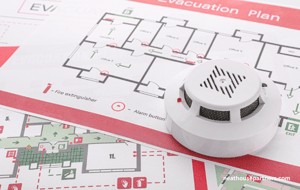Understanding the Noise at Work Regulations: A Guide for Employers
Understanding the Noise at Work Regulations: A Guide for Employers
James Rowland
Commercial Director James leads Account Management, Sales and Marketing at Neathouse Partners.Date
28 September 2023Updated
20 March 2024
Table of contents
Related articles
Tags
Every employer should have a grasp on the Noise at Work Regulations 2005.
Whether you run a small SME or manage HR for a large company, understanding and complying with these regulations is not just a legal necessity, it’s beneficial for your business and employees.
What Are the Noise at Work Regulations?
The Noise at Work Regulations 2005 were introduced to protect employees from risks to their health and safety from noise exposure at the workplace.
These regulations set several mandates for employers:
- Assessment of Risk: Employers need to assess the risks employees face from noise at work.
- Noise Reduction: Employers are required to reduce noise exposure and, if possible, eliminate the noise at the source.
- Ear Protection: The provision of ear protection is obligatory if noise exposure cannot be sufficiently reduced by other methods.
- Compliance with Legal Limits: Employers need to ensure the legal limits on noise exposure aren’t exceeded.
- Information and Training: Workers should be provided with the necessary information, instruction, and training.
- Health Surveillance: Employers must carry out health surveillance where there is a risk to health.
Why Is This Relevant?
The regulations outline two key exposure action values:
- Lower Exposure Action Value: Set at 80 dB. At this level, employers must inform employees of the risks and provide ear protectors, ensuring they are in good working condition.
- Upper Exposure Action Value: Set at 85 dB. Beyond this level, wearing ear protection is mandatory, and employers must enforce this.
The regulations establish exposure limit values, with the maximum daily or weekly exposure set at 87 dB and the maximum peak sound pressure at 140 dB.
These limits consider the reduction in exposure provided by hearing protection.
Understanding and implementing these regulations is crucial.
Failure to do so can lead to legal repercussions and negatively impact the health of your employees.
Regular exposure to noise levels over 80 dB can cause significant hearing loss. Employers who disregard these regulations may face fines and damage to their reputations.
Breaching these exposure levels can have serious implications.
Employers must ensure that employees exposed to high noise levels undergo regular hearing tests conducted by experts.
Employers are required to maintain records of test results and ensure employees are informed of their results and their implications.
Medical advice must be sought in case of hearing loss.
The Benefits of Compliance
HR departments, health & safety officers, and anyone responsible for employee well-being should be well-versed in these regulations.
Awareness and understanding of these regulations can foster a safer workplace and promote the health and well-being of employees.
This can lead to improved employee well-being, reduced absenteeism, and increased productivity.
Additionally, demonstrating a commitment to employee safety can enhance your company's reputation.
Types of Absence Due to Noise Exposure
Noise exposure can lead to various health issues, resulting in different types of absences, such as:
- Short-Term Absence: Temporary hearing loss or stress due to noise exposure may cause employees to take short breaks.
- Long-Term Absence: Chronic exposure can lead to permanent hearing loss, resulting in extended absence or even disability.
- Intermittent Absence: Tinnitus or other noise-induced conditions can cause irregular but recurring absences.
Best Practices for Reporting and Reduction
- Regular Risk Assessments: Conduct regular assessments to identify and mitigate risks.
- Technical Measures: Employ technical solutions to reduce or eliminate noise.
- Ear Protection Zones: Clearly mark areas where ear protection must be worn and ensure its proper usage.
- Employee Training: Provide adequate training and information to employees regarding noise risks and protection measures.
- Health Surveillance: Regularly check the hearing of employees exposed to high noise levels.
The Importance of Prevention
Employers must strive to eliminate or reduce noise exposure.
While providing ear protection might seem like a quick fix, the regulations mandate that this should be a last resort.
Employers should primarily focus on modifying or replacing equipment and maintaining it regularly to reduce noise levels.
Employers need to explore various noise reduction methods. These include:
- Alternate Working Methods: Employ different working methods that reduce exposure to noise.
- Appropriate Work Equipment: Choose equipment that emits the least possible noise.
- Workplace Design and Layout: Consider the design and layout of workplaces, workstations, and rest facilities to minimise noise exposure.
- Information and Training: Ensure employees are well-informed and trained to use work equipment correctly.
Employee involvement is crucial in implementing noise regulations.
Health and safety representatives should ensure that their employer has implemented the new Noise Regulations and must be consulted on how this happens.
Conclusion
Understanding and complying with the Noise at Work Regulations 2005 is essential for every employer.
Doing so not only safeguards your employees’ health but also strengthens your business against potential legal ramifications and fosters a positive working environment.
For further information and to check your hearing levels, take a look at these useful resources.
Remember, understanding these regulations isn’t just about compliance, it’s about safeguarding the health of your employees and the reputation of your business.
Neathouse can support you in managing your H&S responsibilities as an employer.
From our fixed fee health and safety services covering annual audits, policy drafting, risk assessments and on-going advice, or ad-hoc consultancy support when you need it, we're here to help.
Related blog posts

Health & Safety: What is a Competent Person and Why You Need One

Driving Safety Innovation: The Future of Enhanced Safety for Employers

Preparing for the Unexpected: Emergency Response Planning for Employers
Have questions?
Get in touch today
Contact us, and our team will get back to you within 24 hours. We value your questions and are committed to getting them answered quickly.


Hello! I am Nicky
Just fill in the form below with your details, and I will arrange for a member of our team to give you a call.
By clicking, you agree to our Privacy Policy







